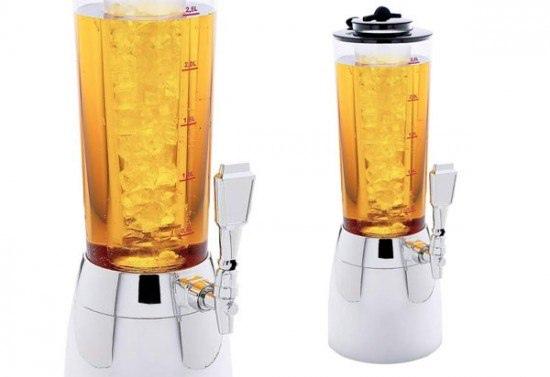Beer dispensers market is growing, driven by craft beer demand, technology, and consumer preferences

The global beer dispenser market is experiencing significant growth, propelled by evolving consumer preferences, technological innovations, and a thriving craft beer movement. Beer dispensers, essential in bars, restaurants, and various commercial establishments, ensure optimal beer quality and efficient service. These devices range from manual systems to advanced automated models featuring temperature controls, volume measurements, and integrated cooling systems.
Market Size and Growth
In 2023, the global beer dispenser market was valued at approximately USD 419.27 million. Projections suggest a compound annual growth rate (CAGR) of 5.1% from 2024 to 2030, with the market potentially reaching USD 595.64 million by 2030. Alternative estimates predict the market could grow to USD 704.4 million by 2033, reflecting a CAGR of 5.3% during the forecast period from 2024 to 2033. This growth is primarily driven by the increasing demand for craft beers and technological advancements in dispensing systems.
Product Segmentation
Beer dispensers are categorized based on the number of faucets and dispensing mechanisms:
-
Single Faucet Dispensers: Ideal for establishments offering a limited selection of beers, these dispensers are straightforward to operate and maintain.
-
Double Faucet Dispensers: Suited for venues with a moderate variety of beers, allowing for efficient service without occupying excessive space.
-
Multiple Faucet Dispensers: Popular in high-demand settings like bars and large events, these dispensers enable simultaneous serving of various beer types, enhancing operational efficiency and customer satisfaction.
-
Bottom-Up Dispensers: These innovative systems pour beer from the bottom of the glass, minimizing foam and maximizing serving speed, thereby reducing waste and improving the customer experience.
Application Segmentation
Beer dispensers serve various applications, including:
-
Bars and Clubs: High-volume establishments that benefit from dispensers capable of serving multiple customers efficiently.
-
Hotels and Restaurants: Require dispensers that maintain beverage quality and cater to diverse customer preferences.
-
Households: With the rise of home bartending, there's an increasing demand for compact and user-friendly dispensers, allowing consumers to enjoy draft beer experiences at home.
Technological Advancements
The beer dispenser industry is witnessing several technological innovations aimed at enhancing user experience and operational efficiency:
-
Smart Dispensing Systems: Integration of Internet of Things (IoT) connectivity and data analytics allows for real-time monitoring and control, ensuring consistent quality and efficient operation.
-
Self-Pour Technology: Enables consumers to serve themselves, promoting responsible drinking and reducing labor costs for establishments.
-
Energy-Efficient Designs: Focus on sustainability has led to the development of dispensers with improved insulation and energy-saving features, aligning with global environmental goals.
Regional Insights
The demand for beer dispensers varies across regions, influenced by cultural preferences, economic development, and the maturity of the craft beer market:
-
North America: The U.S. beer dispenser market is projected to reach USD 1.2 billion by 2030, with a CAGR of 4.4% during the forecast period. The country's robust craft beer industry and vibrant bar culture significantly contribute to this growth.
-
Europe: Countries with rich brewing traditions, such as Germany and Belgium, continue to drive demand for advanced dispensing solutions, both domestically and for export purposes.
-
Asia-Pacific: Rapid urbanization, rising disposable incomes, and a growing appreciation for diverse beer styles are fueling the adoption of beer dispensers, particularly in countries like China and India.
Challenges and Opportunities
Despite positive growth prospects, the beer dispenser market faces challenges:
-
Regulatory Compliance: Navigating varying health, safety, and hygiene regulations across regions can be complex for manufacturers and operators.
-
High Initial Investment: The cost of advanced dispensing systems can be prohibitive, especially for small-scale establishments.
However, these challenges also present opportunities for innovation and market differentiation. Developing cost-effective, user-friendly, and compliant dispensing solutions can open new market segments and enhance customer satisfaction.
Conclusion
The beer dispenser market is poised for substantial growth, driven by technological innovations, a burgeoning craft beer culture, and evolving consumer preferences. As the industry adapts to changing demands, stakeholders must focus on innovation, regulatory compliance, and customer-centric solutions to capitalize on emerging opportunities and navigate potential challenges.
- Art
- Causes
- Crafts
- Dance
- Drinks
- Film
- Fitness
- Food
- Games
- Gardening
- Health
- Home
- Literature
- Music
- Networking
- Other
- Party
- Religion
- Shopping
- Sports
- Theater
- Wellness


